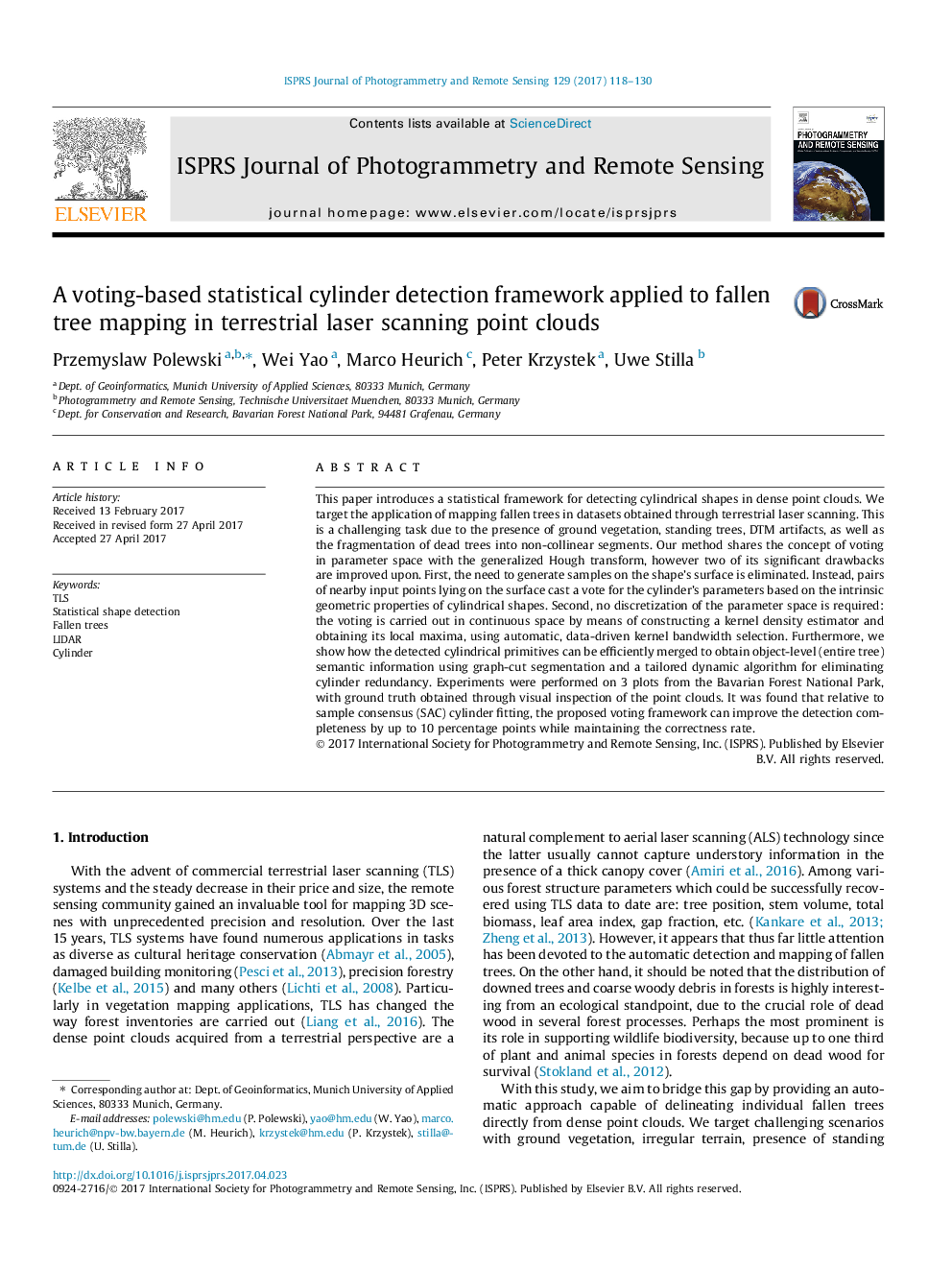| Article ID | Journal | Published Year | Pages | File Type |
|---|---|---|---|---|
| 4972925 | ISPRS Journal of Photogrammetry and Remote Sensing | 2017 | 13 Pages |
Abstract
This paper introduces a statistical framework for detecting cylindrical shapes in dense point clouds. We target the application of mapping fallen trees in datasets obtained through terrestrial laser scanning. This is a challenging task due to the presence of ground vegetation, standing trees, DTM artifacts, as well as the fragmentation of dead trees into non-collinear segments. Our method shares the concept of voting in parameter space with the generalized Hough transform, however two of its significant drawbacks are improved upon. First, the need to generate samples on the shape's surface is eliminated. Instead, pairs of nearby input points lying on the surface cast a vote for the cylinder's parameters based on the intrinsic geometric properties of cylindrical shapes. Second, no discretization of the parameter space is required: the voting is carried out in continuous space by means of constructing a kernel density estimator and obtaining its local maxima, using automatic, data-driven kernel bandwidth selection. Furthermore, we show how the detected cylindrical primitives can be efficiently merged to obtain object-level (entire tree) semantic information using graph-cut segmentation and a tailored dynamic algorithm for eliminating cylinder redundancy. Experiments were performed on 3 plots from the Bavarian Forest National Park, with ground truth obtained through visual inspection of the point clouds. It was found that relative to sample consensus (SAC) cylinder fitting, the proposed voting framework can improve the detection completeness by up to 10 percentage points while maintaining the correctness rate.
Keywords
Related Topics
Physical Sciences and Engineering
Computer Science
Information Systems
Authors
Przemyslaw Polewski, Wei Yao, Marco Heurich, Peter Krzystek, Uwe Stilla,
